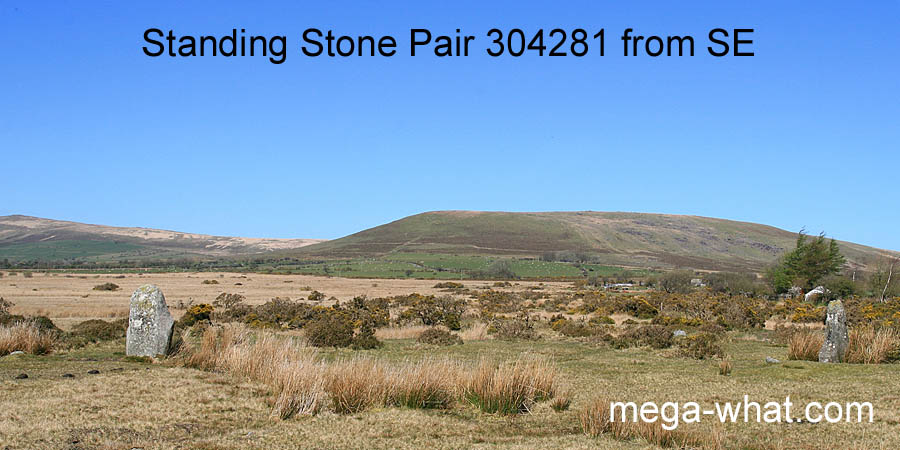 Gors Fawr Standing Stone Pair is on commonage at the southern foot of the Preseli Hills, about 1km to the north of Mynachlog Ddu village.
Close to the road and c.130m north-north-east of Gors Fawr Stone Circle.
Gors Fawr Standing Stone Pair is on commonage at the southern foot of the Preseli Hills, about 1km to the north of Mynachlog Ddu village.
Close to the road and c.130m north-north-east of Gors Fawr Stone Circle.
The two stones are both a bit less than 2m high and are 13.5m apart. Survey was from mid-way between them.
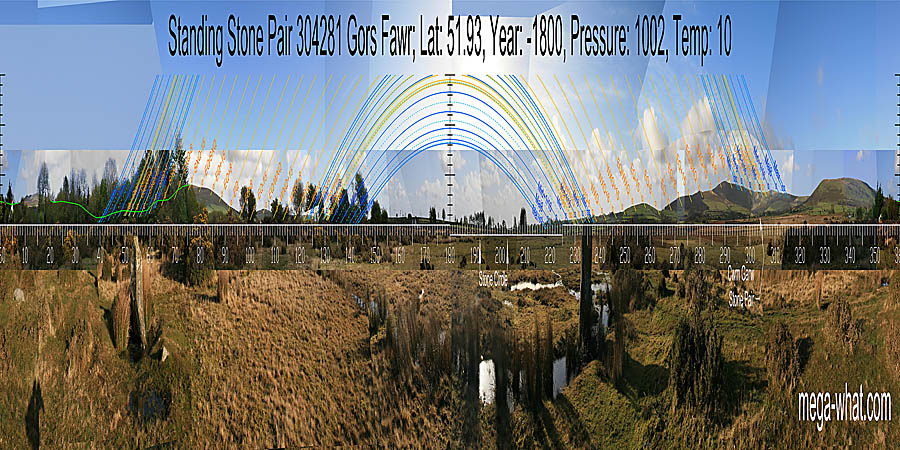 South is on a slope [Pic].
South is on a slope [Pic].
North is in a dip [Pic].
Green lines approximate hidden horizon segments.
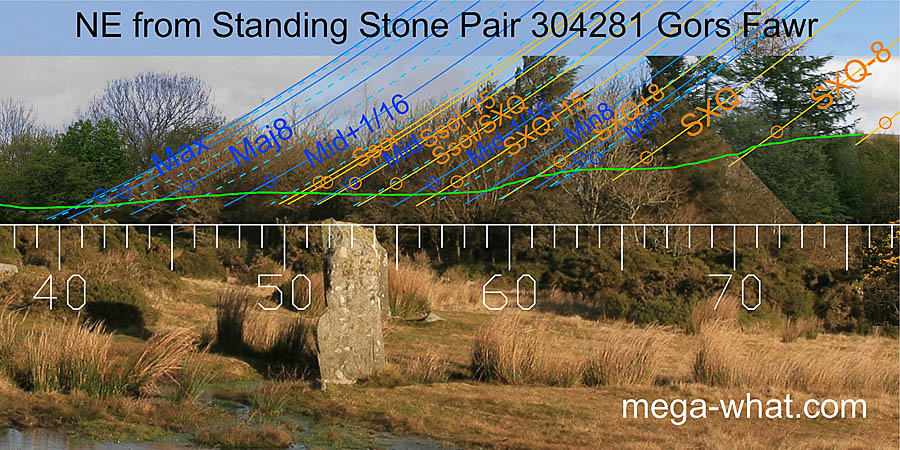 A hedge obscures most of the eastern horizon.
A hedge obscures most of the eastern horizon.
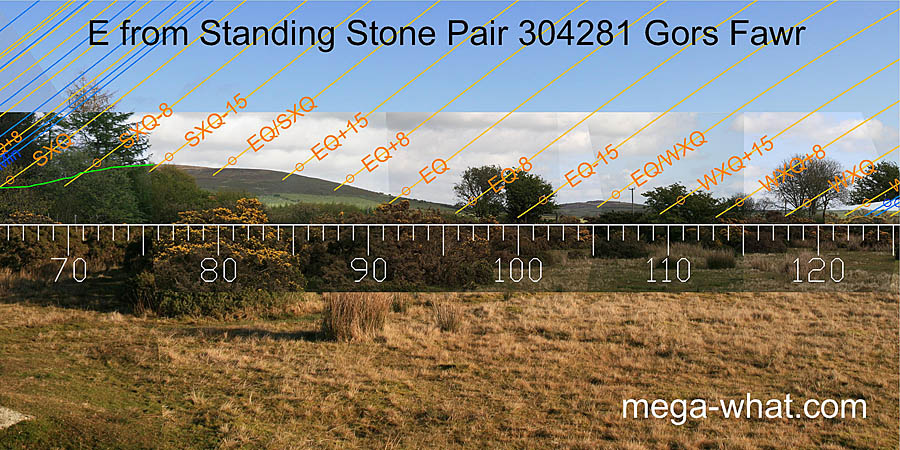 The first bit of visible skyline is the southern end of Foel Drych where the summer cross-quarter / equinox half-way point occurs at a break/step in the ridge.
The equinox itself is at a very slight break in the south slope. Then the basal dip is an equinoctial half-month and the half-way to the winter cross-quarter marker is a hilltop.
The first bit of visible skyline is the southern end of Foel Drych where the summer cross-quarter / equinox half-way point occurs at a break/step in the ridge.
The equinox itself is at a very slight break in the south slope. Then the basal dip is an equinoctial half-month and the half-way to the winter cross-quarter marker is a hilltop.
 Further hedgerow trees obscure most of the south-east but the cross-quarter's quarter-month bracket is at a highpoint of the ridge with the minor standstillLunistice positions vary cyclically over an 18.6 year period but are fairly static for more than a year at either end of the range
at the top of the slope.
Further hedgerow trees obscure most of the south-east but the cross-quarter's quarter-month bracket is at a highpoint of the ridge with the minor standstillLunistice positions vary cyclically over an 18.6 year period but are fairly static for more than a year at either end of the range
at the top of the slope.
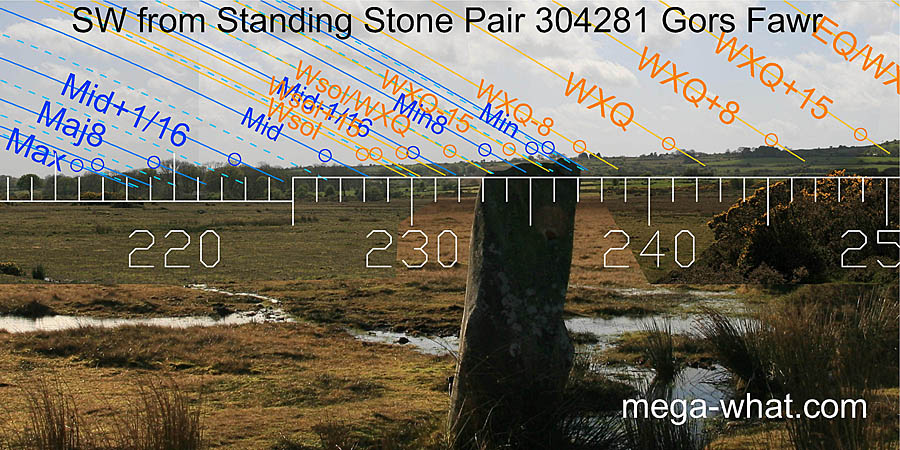 As from the stone circle, the south-western horizon is a fairly flat slope with little in the way of markers.
As from the stone circle, the south-western horizon is a fairly flat slope with little in the way of markers.
The axis of the pair [Pic] indicates the direction of the lunar minor eighth and it is conceivable that the original placement of these stones facilitated measurement of this horizon sector.
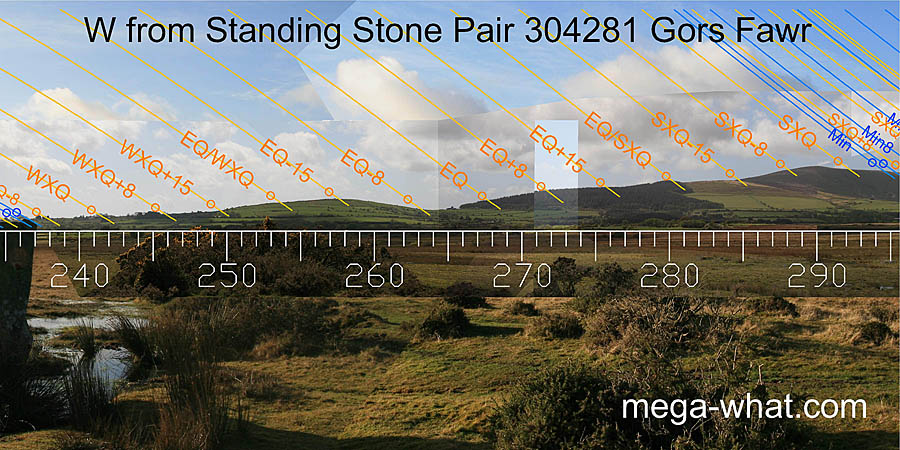 At the southern foot and on top of a low hill to the west are half-month brackets for the winter cross-quarter and equinox, north of & south of respectively.
The quarter-month before spring equinox is then at the same hill's northern foot.
At the southern foot and on top of a low hill to the west are half-month brackets for the winter cross-quarter and equinox, north of & south of respectively.
The quarter-month before spring equinox is then at the same hill's northern foot.
The equinox falls on the southern slope of Foel Cwmcerwyn which is now largely forested and thus may once have given a better fit.
Above the forest, SXQ-15 and SXQ-8, the half and quarter months before the cross-quarter both occur at changes in the slope.
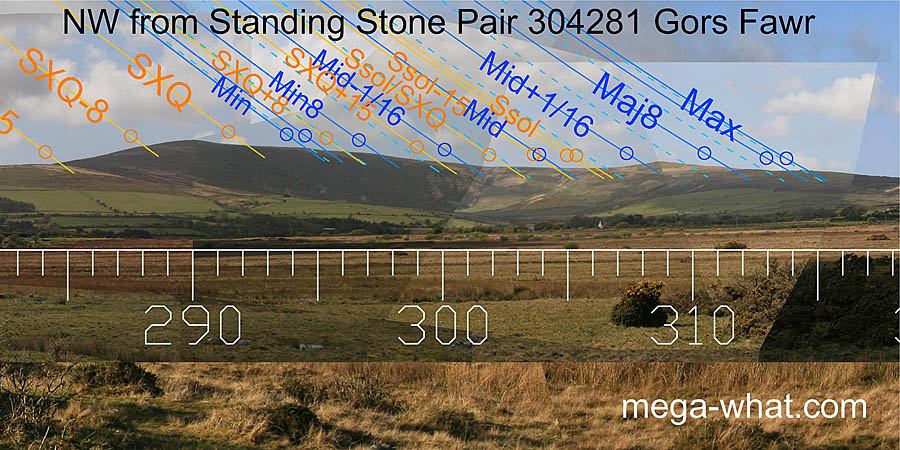 Foel Cwmcerwyn summit is not a marker from here, but once again the eastwards run of the hills has been subtly but effectively used.
Foel Cwmcerwyn summit is not a marker from here, but once again the eastwards run of the hills has been subtly but effectively used.
The minor end of the lunisticeLunistices are the most northerly and southerly moons of the month. The lunar equivalent of solstices - more. range and the lunar minor eighth both occur at changes in the slope while the basal step is an effective marker for the sixteenth before the midpoint, which itself occurs at the opposite side of the basal dip to the solstice. The next top then marks the upper limb of a sixteenth on the major side.
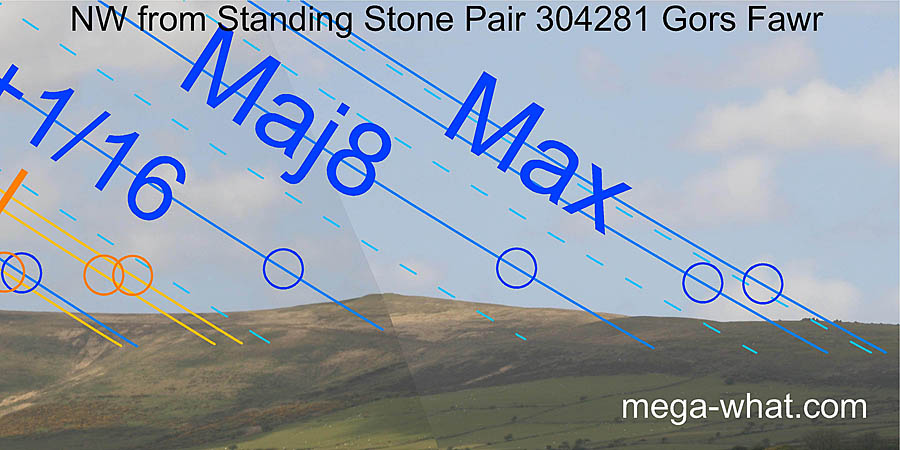 The following two notches are good for the eighth and sixteenth adjacent to the major standstillLunistice positions vary cyclically over an 18.6 year period but are fairly static for more than a year at either end of the range
and the very end of the lunisticeLunistices are the most northerly and southerly moons of the month. The lunar equivalent of solstices - more.
range occurs over a series of rock outcrops that have the potential to give very fine precision.
This part of the horizon is 1.6km away and the stones 13.5m apart, so moving from one to the other would shift the position of the lunar disc by almost its own diameter.
The following two notches are good for the eighth and sixteenth adjacent to the major standstillLunistice positions vary cyclically over an 18.6 year period but are fairly static for more than a year at either end of the range
and the very end of the lunisticeLunistices are the most northerly and southerly moons of the month. The lunar equivalent of solstices - more.
range occurs over a series of rock outcrops that have the potential to give very fine precision.
This part of the horizon is 1.6km away and the stones 13.5m apart, so moving from one to the other would shift the position of the lunar disc by almost its own diameter.
- Rhos Fach Standing Stone Pair is 1km to the north.
- Cwm Garw Standing Stone Pair is 2.3km to the north-west.
- Waun Lwyd Standing Stone Pair is 3km to the north-east.
References
- National Monuments Record of Wales: Coflein database - site details.
- FIGGIS, N.P. 2001 Prehistoric Preseli a field guide. Machynlleth: Atelier Productions. p98, no.100.
